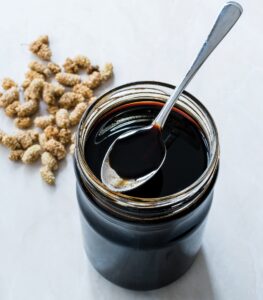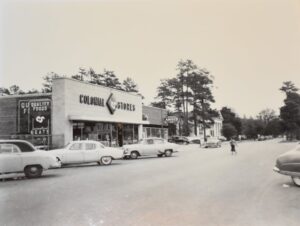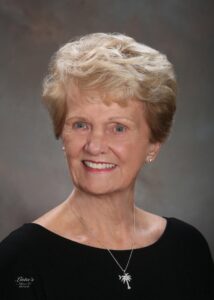Aiken, a town of scarcely 30,000 people, is home to one of only ten court tennis buildings active in the United States. How did this game of royalty and tradition, played by Henry VIII himself, come to these quiet backwoods? It is a story of sportsmen building “a rustic, sporting retreat.”
Court tennis, called “real tennis” outside the United States, predates our modern game of tennis (“lawn tennis”). It likely evolved from a game played in medieval courtyards that involved hitting a ball back and forth with a bare hand, later with a glove. By Renaissance times, there were hundreds of enclosed courts in Europe, and the glove had been replaced by a racquet. The kings of France and England played, and courts were built at many palaces.
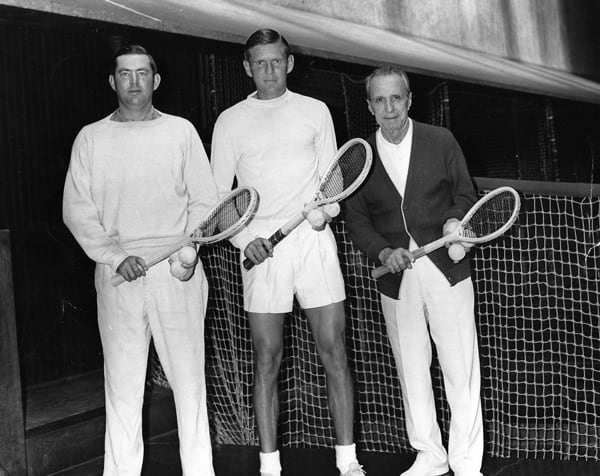
Jimmy Bostwick, Pete Bostwick, Jr., and Pierre Etchebaster. Photo in the Aiken County Historical Museum collection.
The Court Tennis Facility is Built
By the late 1800s, a combination of terrain and climate put Aiken on the map. Prominent wealthy Northerners began visiting. They installed a host of sporting venues — polo fields, racetracks, and a golf course. One of these Northerners, financier and equestrian William C. Whitney, built Joye Cottage. He is also responsible for bringing court tennis to Aiken.
In 1898 Whitney and other Northerners joined prominent locals to incorporate The Aiken Club, a social club, and in 1899 they purchased the old Wyman residence on Park Avenue as a place in which to gather. Some of The Aiken Club members played court tennis at a club in New York. Prompted by these men, Whitney commissioned Englishman Joseph Bickley to design a court tennis facility near The Aiken Club, the tall brick building seen today on Newberry Street just south of the Aiken Community Theater.
Bickley was renowned in the court tennis world. He was responsible for the design and construction of English courts, such as those at The Queen’s Club and Hampton Court Palace, as well as most of the courts in the United States. It is believed that Bickley had a “secret formula” that included oxen blood and lamp oil that, when applied to playing surfaces, could be polished to a smooth, glossy finish that withstood the damp.
The Aiken Club Plays Ball
Play began around 1902. Although Whitney owned it, he generously made his court available to others. Over the next several years other structures were built on club property; the clubhouse itself was remodeled, and a new wing was added in 1915. Design of this wing has been attributed to the distinguished American firm of Hoppin & Koen, which also designed Hopelands, the Iselin’s home. Sometime between 1918 and the mid-1920s, the new wing was detached from the clubhouse and annexed onto the court building.
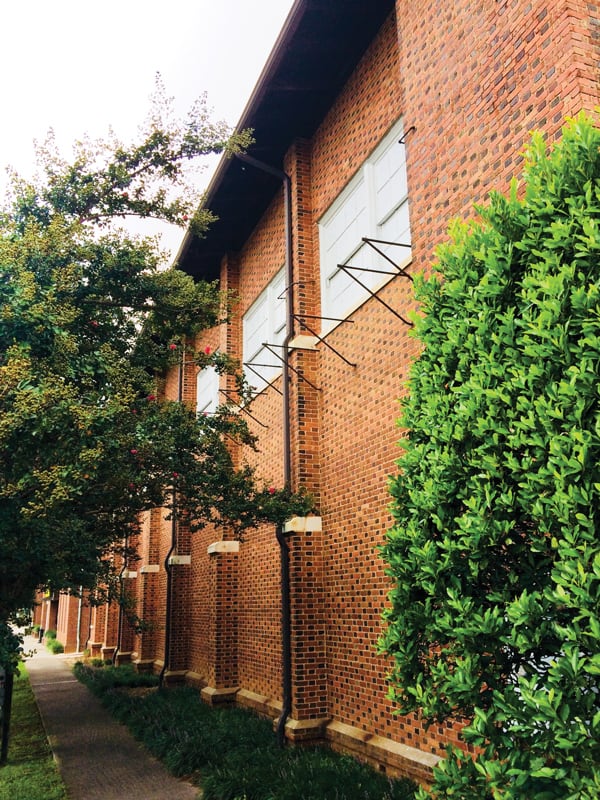
Present-day exterior of the court tennis building. Photo by Linda Johnson.
The Home to Champions
The club and court fell into disuse in the years following World War I. The clubhouse was sold in 1928 and is now gone; the court building was sold in 1935. Fortunately, within just a few months a group of court tennis enthusiasts repurchased the court building, and the Aiken Tennis Club was reestablished. The first winter after its revival, the club invited Basque court master Pierre Etchebaster, World Champion from 1928 to 1954, to become the club professional. He served as an instructor for forty winter seasons. During his first season, Etchebaster began coaching Northrup “Norty” Knox, a student at the nearby Aiken Preparatory School. Knox went on to become World Champion in 1959, a title he held undefeated until his retirement in 1969. Brothers George Herbert “Pete” Bostwick, Jr. and James C. “Jimmy” Bostwick also learned the game at the Aiken court under Etchebaster. Pete was the World Champion in court tennis from 1969 to 1972, and Jimmy reigned from 1972 to 1976. Decades later, Camden Riviere launched his career in Aiken on his road to becoming the 2016 World Champion.
There are only nine other court tennis buildings in the United States, all in metropolitan areas. For four World Champions to grace our small-town court is extraordinary, a tribute to Aiken and its club.
Stay curious!
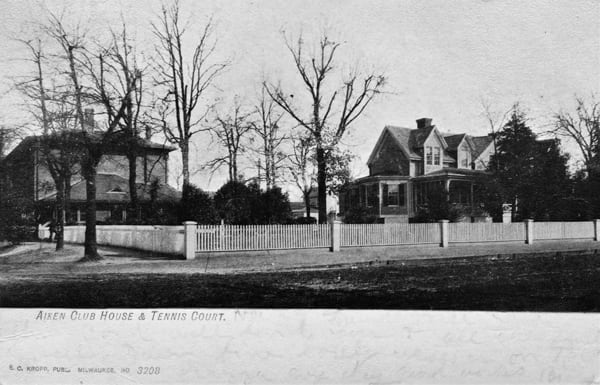
Postcard circa 1905 showing the court tennis building on the left and the clubhouse on the right. Photo courtesy of Allen Riddick.


